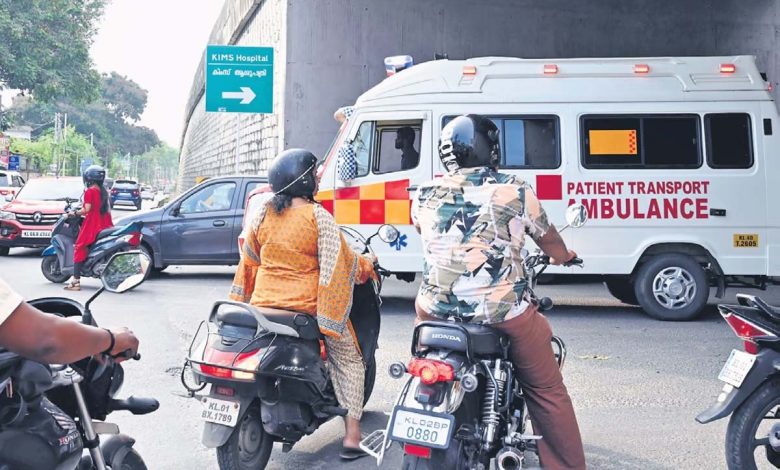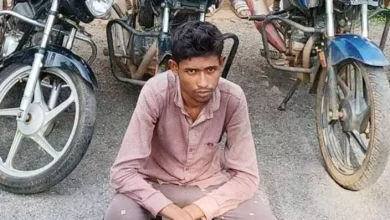Careless ambulances have raised alarm bells in Kerala

Thiruvananthapuram: Sujith Radhakrishnan, a resident of Ambalamukku, Thiruvananthapuram, vividly remembers his first experience with an ambulance. There was no emergency, and the ambulance was not for him. Instead, Sujeet hired a man to take his elderly father home after his spine surgery. He had no idea how painful the journey ahead would be. “The driver was a young boy. He sounded the siren and recklessly jumped the signal and drove the vehicles forward. There was no emergency, but the driver’s actions made it seem like one. When I protested, he assured me that there would be no problem. We reached home within 10 minutes, shaken to the core,” said Sujit. In Kerala, where road accidents, drowning and snake bites are alarmingly high, ambulances are considered frontline responders, racing against time to save lives. However, in the absence of strict rules to govern them, their noble mission sometimes turns into dangerous situations, like on May 7, when a speeding ambulance carrying a patient collided with a car at Talpadi in Kasaragod. Collided with. A man and his two sons in the car died. One of the most serious issues arising from uncontrolled ambulance driving is the prevalence of reckless driving. The lack of clear guidelines and monitoring means that drivers run the risk of being tempted to speed, disregard traffic rules and engage in other dangerous activities to reach their destination faster. Such actions not only jeopardize the safety of patients and emergency responders, but also pose a significant risk to other passengers. “Anyone with a light motor vehicle license can become an ambulance driver,” said an ambulance driver on condition of anonymity. “Most drivers are young. The remuneration is low, but it is the thrill (of driving fast) that excites them. The recent trend is to create reels for social media while driving at high speed. These ‘ambulance reels’ are getting a lot of reach,” he said. While others on the road have largely accommodated the emergency nature of the ambulance service and the subsequent ‘right of way’ privilege, there have been many instances where the privilege has been abused. There is also the issue of rent. While a chain of ambulances parked in front of hospitals is a common sight and provides assurance about service, the lack of regulation or standardization in fares can give nightmares to those in need. In fact, even Transport Minister KB Ganesh Kumar had expressed disappointment over how he was overcharged by ambulance drivers, calling for regulation of the service, standardizing fares and action against erring drivers. There was a demand to take steps to take action. The transport department had then constituted a five-member committee to fix the charges for ambulance services in Kerala. Efforts have been made earlier to regulate the services of about 9,000 ambulances registered in the state. However, almost always, there were differences of opinion over controlling speed and fares. “There are ambulances that run like tourist taxis with high-decibel sound systems and bright lights,” said T Elangovan, former executive director of the Kerala Road Safety Authority (KRSA). He also said ambulances should obey speed limits just like everyone else. “Drivers are not as exempt from the speed limit as they want to believe. It is okay if their speed is 10% more than the acceptable limit. However, most ambulances barely run below 100 kmph. The Motor Vehicles Department (MVD) and the police ignore these violations. In its training, KRSA strives to educate drivers about impact potential at high speeds. When AI cameras went live in the state to check traffic violations, emergency services, including ambulances, got a reprieve. This means that even if the ambulance breaks signals or exceeds the speed limit, no challan will be issued. It is felt that this could lead to a culture of impunity where drivers cannot be held accountable, even in cases where their carelessness or inattention causes harm. Enforcement officials in the MVD said they had their limits in restricting ambulances. “We can certainly issue them challans for violating body codes, having extra fittings, etc., but it is difficult to stop an ambulance to find out the purpose of their visit; Whether it is an emergency or not. If anything happens to the patient, everyone will blame the stopping officer,” said an official from the Transport Commissionerate. He said 5,247 ambulances have been fitted with Vehicle Location Tracking and Emergency Alert System (VLTDS), which helps the control room track them. However, they are part of a larger fleet, including school vehicles and stage carriers, making tracking difficult under the server’s current capacity.





